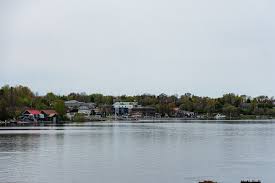
Introduction
Manitoulin Island, located in Lake Huron, is the largest freshwater island in the world and is known for its stunning landscapes and rich cultural heritage. This picturesque island is celebrated not only for its natural beauty but also for its Indigenous history and vibrant local communities. As more travelers seek off-the-beaten-path destinations, Manitoulin Island’s unique offerings are gaining attention, making it a relevant topic for outdoor enthusiasts and cultural explorers alike.
Geography and Natural Attractions
Covering over 2,766 square kilometers, Manitoulin Island boasts a diverse topography, featuring forests, lakes, and wetlands. The island is home to more than 100 inland lakes, with Lake Mindemoya being one of the most notable. Its diverse ecosystems provide habitat for various wildlife species, making it a prime destination for birdwatching, hiking, and fishing.
Among the most visited natural attractions is the famous Bridal Veil Falls, where visitors can enjoy the breathtaking sight of water cascading down rugged cliffs. Additionally, the island offers numerous trails for hiking and biking enthusiasts, such as the Cup and Saucer Trail, which rewards adventurers with stunning views from its summit.
Cultural Heritage
Manitoulin Island is rich in Indigenous culture, being home to several First Nations communities, including the Wiikwemkoong Unceded Territory, the largest unceded First Nation in Canada. Visitors can experience the island’s cultural heritage through events like the annual Manitoulin Island Cultural Festival, where local artisans, musicians, and performers showcase their talents and traditions. Educational opportunities about the Anishinaabe culture, such as traditional storytelling and crafts, also enrich the visitor experience.
Current Developments and Economic Impact
As interest in eco-tourism and cultural tourism increases, Manitoulin Island is seeing a surge in development efforts aimed at enhancing its appeal to visitors. Local authorities and stakeholders are implementing strategies to boost sustainable tourism initiatives while preserving the island’s natural landscapes and cultural integrity. Investments in infrastructure, such as accommodations and recreational facilities, may foster economic growth for the island, benefiting local communities.
Conclusion
Manitoulin Island represents a unique blend of natural beauty and cultural richness, making it a significant destination not just in Canada but also on an international scale. As the island continues to develop its tourism offerings while focusing on sustainability, it is poised to attract a growing number of visitors. By embracing its heritage and protecting its landscapes, Manitoulin Island sets an example of how to balance growth with preservation, making it a compelling place for future generations to explore.



